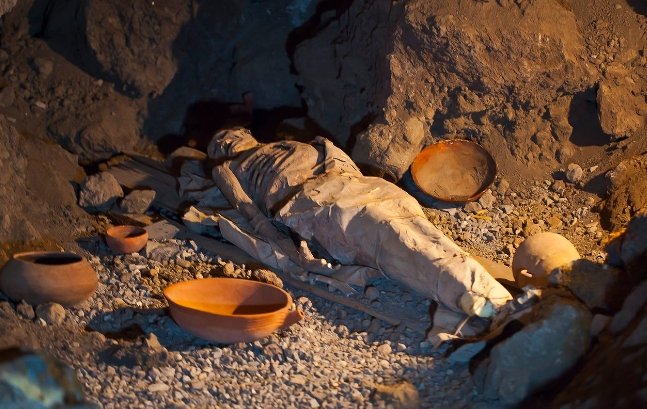Archaeologists have recently uncovered a fascinating cemetery near the village of Ostriv in western Ukraine. The cemetery dates back to the 11th century, a time when the region was undergoing cultural and religious changes. The burials reveal a mix of Kyivan and Baltic traditions, as well as some puzzling features that have not been fully explained.
The Discovery of the Cemetery
The cemetery was discovered by the Architectural-archaeological expedition of the Institute of Archaeology of the National Academy of Sciences of Ukraine (IA NASU). The excavations began in 2017 and continued until 2022. The researchers explored an area of 2257 square meters and found 107 graves of the medieval necropolis.
Most of the graves were in wooden coffins, and some of them were covered with stone slabs. The skeletons were of both men and women, and some of them were buried with various objects, such as weapons, jewelry, and buckets. The archaeologists also found a stone altar with offerings of bracelets, beads, and food.
The Rings and the Buckets
One of the most striking features of the cemetery was the presence of bronze rings around the necks of some of the women. These rings were apparently a kind of social marker, indicating the status or identity of the wearer. The rings were made of twisted wires and had different shapes and sizes. Some of them had pendants or beads attached to them.

Another intriguing feature was the placement of wooden buckets at the feet of some of the men and women. The buckets were similar to those used for brewing beer or storing food. The researchers believe that the buckets may have been part of a funerary ritual, possibly related to the consumption of alcohol or the provision of food for the afterlife.
The Orientation and the Origin of the Burials
The cemetery also showed an unusual orientation of the graves. Unlike the typical north-south alignment of the burials in the region, these graves faced to the south and west. This may indicate a different cultural or religious affiliation of the people buried there.
The researchers suggest that the cemetery may have been used by a group of people who came from the Baltic regions, such as Prussia, Pomerania, or Masovia. These people may have traveled to Ukraine to serve under the powerful rulers of Kyiv, such as Volodymyr the Great, who unified the Slavic tribes and converted them to Christianity in the late 10th century.
However, the cemetery also displayed some elements of the Kyivan culture, such as the use of wooden coffins and stone slabs. The archaeologists also found some Christian symbols, such as crosses and fish, on some of the objects. This suggests that the people buried there may have adopted some aspects of the local culture and religion, or that they may have been influenced by both Pagan and Christian beliefs.
The Significance of the Cemetery
The Ostriv cemetery is a valuable source of information about the history and culture of Ukraine in the 11th century. It reveals the diversity and complexity of the society at that time, as well as the interactions and influences between different groups of people. The cemetery also poses some intriguing questions about the identity and origin of the people buried there, and the meaning and purpose of their funerary practices.
The researchers plan to continue their work on the cemetery and conduct further analyses of the skeletons and the objects. They hope to learn more about the biological and genetic characteristics of the people, as well as their health, diet, and lifestyle. They also hope to compare the cemetery with other similar sites in the region and in the Baltic areas, and to shed more light on the historical and cultural context of the cemetery.














